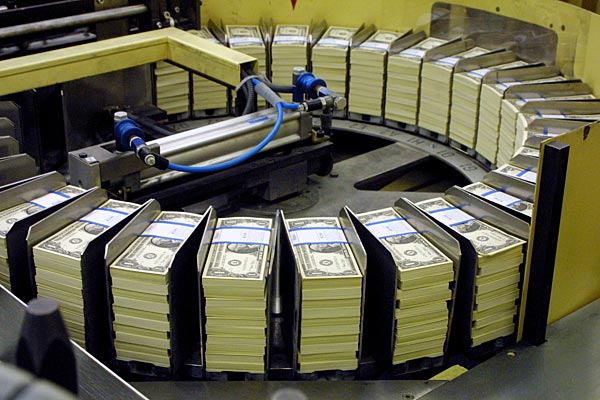
The U.S. dollar reached fresh multiyear highs on Friday after a stronger-than-forecast November U.S. jobs report increased expectations the Federal Reserve may begin raising interest rates sooner than previously thought.
Employers added the most workers in nearly three years in November and wages rose, the latest U.S. employment report showed. Nonfarm payrolls increased by 321,000, better than forecasts for an increase of 230,000. The unemployment rate held steady at a six-year low of 5.8 percent.
Earlier this week U.S. central bank officials such as New York Fed President William Dudley and Fed Vice Chairman Stanley Fischer made comments that pointed toward rate increases in response to stronger U.S. economic figures, maintaining a focus on what the data showed.
“The Fed already indicated that they were shifting. The comments from Dudley and Fischer earlier this week suggested they were beginning to think seriously about normalizing (policy) and this would make them think even more seriously, that they should be thinking about H1 (first half of the year) versus H2,” said Steven Englander, global head of G10 foreign exchange strategy at CitiFX.
Friday’s jobs data pulled market expectations for the Fed to start tightening monetary policy back toward mid-2015 from September.
Interest rate futures contracts now show that traders see about a 53 percent chance for a July 2015 hike, based on the CME FedWatch program. That is more in line with last month’s Reuters poll of economists who see the first rate increase in June of next year.
“The trend is pretty good. Now comes the second-guessing in the market. It brings concerns that the Fed might look to raise earlier than some people had expected. I don’t think anyone should fear the Fed right now,” said Scott Brown, chief economist at Raymond James in St. Petersburg, Florida. Brown said the increase could be seasonal but there is optimism heading into 2015.
Rising U.S. interest rates would be in stark contrast to the euro zone and Japan, where monetary policy is moving in the opposite direction. The pattern would increase the yield advantage for investors holding U.S. dollar-denominated assets.
“We think dollar/yen could hit 125 yen before the end of 2014. But then it is going to stabilize. We think that the good news will be priced in at that stage,” said Englander, who added the euro has more to fall, perhaps reaching $1.20 before the end of the year and plumbing lows of $1.12 to $1.15 in 2015.
In late afternoon New York trade, the dollar traded at 121.42 yen, a gain of 1.37 percent but off a high of 121.68 yen, the strongest level since mid-2007. JPY=
The euro fell 0.70 percent to $1.2290. In the immediate trading after the payrolls data the euro slid to $1.2271, its weakest since mid-August 2012. EUR=
On Thursday, European Central Bank President Mario Draghi said the central bank would decide early next year whether to take fresh action to revive the economy. Draghi also said any decision by the bank’s Governing Council need not be unanimous to begin quantitative easing measures, including buying of sovereign bonds in an effort to spur borrowing and investment.
Some in the market were disappointed Draghi did not find an even more explicit way of moving the bank closer to outright quantitative easing.
But his language, and a veiled warning that opposition from German policymakers would not stand in the way of the governing council acting if need be, pointed towards the launch of bond-buying in the first quarter.
“Taking on board likely further falls in headline HICP (inflation), Draghi’s comments give succour to the idea that further policy moves are coming at the next couple of meetings,” said London-based Gavin Friend, senior markets strategist at National Australia Bank.
The U.S. dollar index hit a peak of 89.467 .DXY, its highest since early March 2009, up 0.86 percent on the day.
The slide in crude oil prices to below $66 a barrel CLc1 continued to undermine the Norwegian crown. At one point the dollar advanced 1.75 percent to 7.1793 crowns NOK=, its strongest since March 2009. It traded late at 7.1263 crowns, for a 1 percent gain on the day.
SOURCE: http://www.reuters.com/article/2014/12/05/us-markets-forex-idUSKCN0JH1WH20141205



